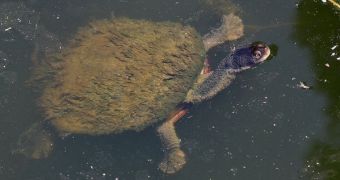Most animal species, if taken from the wild into the heart of cities, lose their abilities to stay “cool,” and never adapt to a life of roaming free among cars, buses and office buildings. However, this doesn't seem to be the case with a turtle species in Australia, which apparently thrives in an urban environment, oddly enough, even more than it does in its natural ecosystem. According to new studies, the turtles seem to develop longer home ranges, and are also able to withstand drought far better than in the wild, the BBC News reports.
“We expected suburban turtles to move around less than those on the nature reserves in response to the many threats that suburban turtles could encounter, but we found the opposite. Suburban turtles traveled longer distances and occupied home ranges nearly three times larger than turtles in the nature reserves,” University of Canberra Institute for Applied Ecology research team member Dr. John Roe said, quoted by the British news agency.
In a new scientific paper, published in the latest issue of the journal Biological Conservation, the team reports that urban turtles also have a higher survivability rate in the cities than they do in their natural habitats, or in zoos. The animals also grow faster than they do in other places. The turtle species, known as the eastern long-necked turtles (Chelodina longicollis), lives mostly in the southeastern parts of the country. For the new study, the turtles that lived in the suburbs of Canberra were compared with the ones living in nearby natural reserves. Miniature radio transmitters were attached to some three dozen turtles.
“Given their extensive movements, we expected that suburban turtles would have a high rate of encounters with vehicles on roads, and thus fewer would survive. Despite this, suburban turtles did not suffer appreciably higher mortality than their counterparts on reserve lands, only one of our 36 radio tracked turtles was hit by a vehicle,” Dr. Roe explained. “The vegetated drainage lines and culverts allowed the turtles to move about and use the landscape in normal ways, which reduced their exposure to urban threats and allowed them to avoid suffering from excessive road mortality.”
“We have additional data that demonstrates higher population abundances, growth rates, and evidence of at least equivalent recruitment from reproduction in suburban turtles. It would be interesting to determine whether well-designed urban areas hold any promise as long term drought refuges for some turtle populations,” he concluded.

 14 DAY TRIAL //
14 DAY TRIAL //